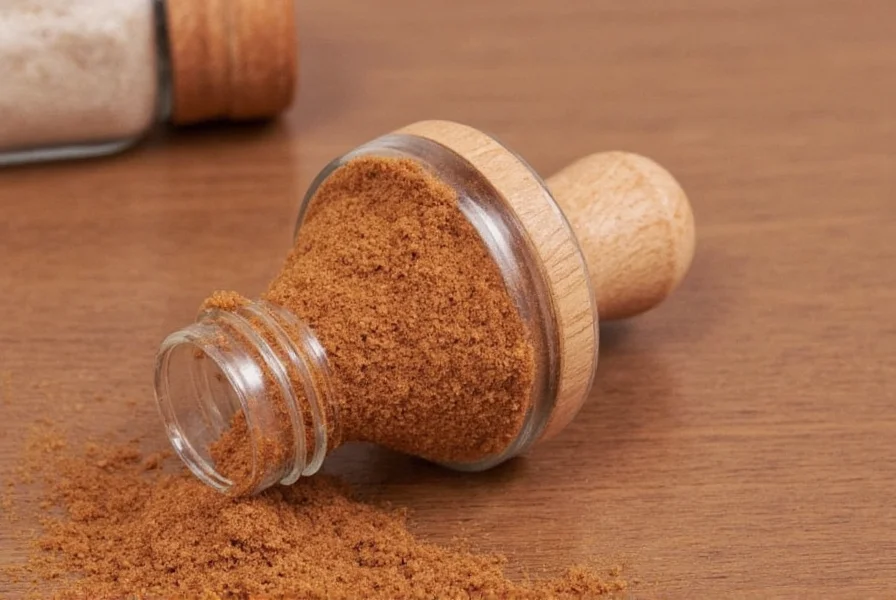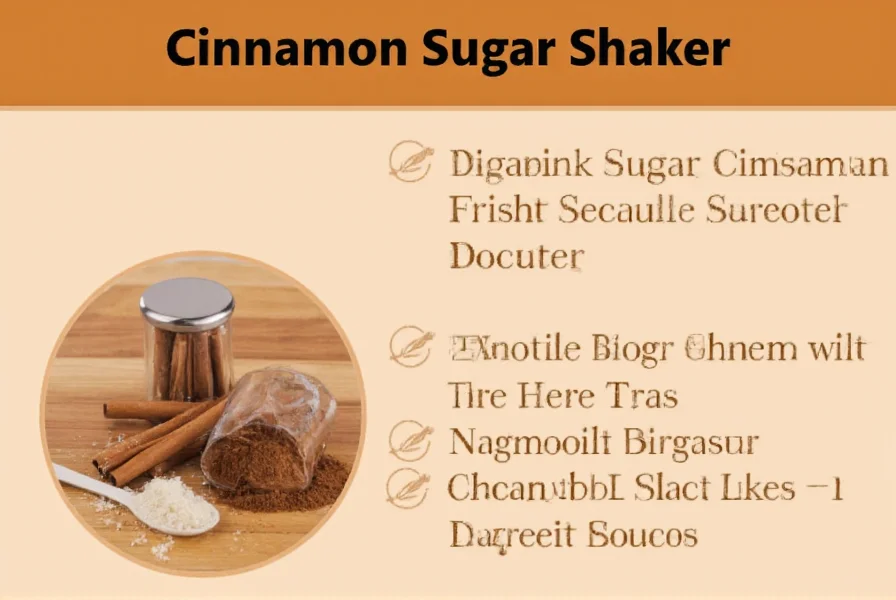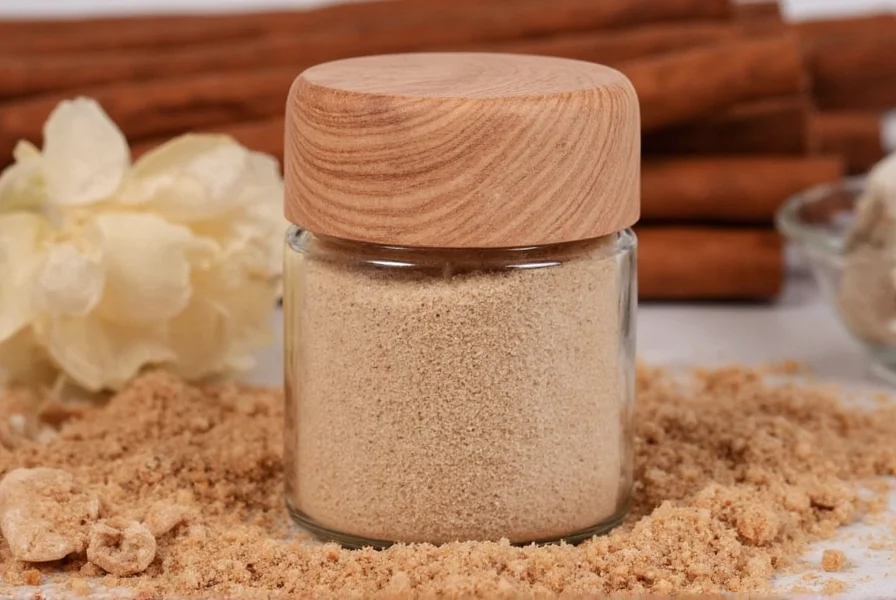When selecting kitchen tools for baking and dessert preparation, understanding specialized equipment like the cinnamon sugar shaker makes a significant difference in both efficiency and presentation. Unlike regular spice shakers designed for fine powders, this specific tool addresses the unique challenges of dispensing the coarser cinnamon-sugar mixture that tends to clump and clog standard dispensers.
Why Standard Shakers Fail with Cinnamon Sugar
Cinnamon sugar presents a unique challenge for standard spice containers. The combination of fine sugar crystals with fibrous cinnamon particles creates a mixture that's prone to clumping and clogging. When users attempt to use regular spice shakers, they often encounter frustrating blockages that disrupt their baking workflow and create uneven distribution.
The ideal cinnamon sugar shaker features strategically sized perforations that allow the mixture to flow smoothly while maintaining control over the amount dispensed. This specialized design prevents the frustrating clogs that occur with standard shakers, ensuring consistent application whether you're finishing cinnamon rolls, dusting coffee cakes, or garnishing beverages.

Key Features of an Effective Cinnamon Sugar Shaker
When evaluating options for the best cinnamon sugar shaker for baking applications, consider these essential characteristics:
| Feature | Standard Spice Shaker | Cinnamon Sugar Shaker |
|---|---|---|
| Hole Size | 0.5-1mm diameter | 1.5-3mm diameter |
| Material | Often plastic | Glass or stainless steel |
| Capacity | Small (2-4oz) | Larger (6-8oz) |
| Shaking Mechanism | Fine control | Bold dispensing |
Practical Applications in Baking and Beverage Preparation
The cinnamon sugar shaker shines in multiple culinary applications where precision and presentation matter. Professional bakers and home cooks alike benefit from understanding proper usage techniques:
- Baked Goods Finishing: Apply an even layer to cinnamon rolls, coffee cakes, and sweet breads immediately after baking when surfaces are still slightly tacky
- Beverage Garnishing: Create professional-looking finishes on cappuccinos, lattes, and hot chocolate with controlled sprinkling
- Dessert Presentation: Enhance churros, beignets, and other fried pastries with consistent cinnamon sugar coating
- Baking Efficiency: Streamline production when preparing multiple items requiring cinnamon sugar topping
DIY Alternatives When Specialized Shakers Aren't Available
For those wondering how to use cinnamon sugar shaker alternatives, several household items can serve temporarily:
- Clean salt shaker with widened holes using a small nail
- Reusable plastic mesh produce bags for dusting
- Small fine-mesh sieve for controlled application
- Zip-top bag with corner snipped for precise lines
While these alternatives work in a pinch, they lack the precision and convenience of a purpose-built cinnamon sugar dispenser. The temporary solutions often result in uneven distribution or wasted ingredients compared to dedicated shakers.
Maintenance Tips for Long-Lasting Performance
Proper care extends the life of your cinnamon sugar shaker and prevents common issues:
- Always use completely dry cinnamon and sugar to prevent clumping
- Clean thoroughly between uses, especially when switching between different spice blends
- Store with the lid inverted to prevent moisture accumulation
- Include a silica packet to absorb ambient moisture in humid environments
- Tap gently before use to loosen any settled mixture
Common Mistakes to Avoid
Even experienced bakers make these errors when using cinnamon sugar shakers:
- Mixing cinnamon and sugar with high moisture content ingredients
- Using a shaker with holes too small for the specific cinnamon-sugar ratio
- Storing the shaker near heat sources that accelerate clumping
- Attempting to use the same shaker for both fine spices and coarse blends
- Overfilling the container, which compresses the mixture and causes clogs
Creating the Perfect Cinnamon-Sugar Blend
The ideal ratio depends on your application. For most baking purposes, a 1:4 cinnamon to sugar ratio provides balanced flavor without overwhelming bitterness. When preparing your mixture:
- Sift both ingredients separately before combining
- Mix thoroughly in a large bowl before transferring to your shaker
- Add a small amount of cornstarch (1/4 teaspoon per cup) to prevent clumping
- Store unused mixture in an airtight container away from light and moisture

Specialized Uses Beyond Baking
Creative cooks have discovered additional applications for cinnamon sugar shakers:
- Dusting fruit salads for added flavor and presentation
- Creating decorative patterns on chocolate desserts
- Adding finishing touches to breakfast items like French toast
- Preparing spiced sugar for rimming cocktail glasses
- Evenly distributing sugar on sweet potato casserole toppings
Frequently Asked Questions
Can I use a regular spice shaker for cinnamon sugar?
Regular spice shakers typically have holes too small for cinnamon sugar mixtures, causing frequent clogs. The coarser texture of cinnamon combined with sugar crystals requires larger perforations (1.5-3mm) that standard shakers (0.5-1mm) don't provide. For consistent results, a specialized cinnamon sugar dispenser is recommended.
What's the ideal hole size for a cinnamon sugar shaker?
The optimal hole size ranges from 1.5 to 3 millimeters in diameter. This allows the cinnamon-sugar mixture to flow freely without clogging while still providing control over the amount dispensed. Smaller holes (under 1.5mm) tend to clog with standard cinnamon-sugar blends, while holes larger than 3mm may dispense too much mixture too quickly.
How do I prevent my cinnamon sugar mixture from clumping in the shaker?
To prevent clumping, ensure both your cinnamon and sugar are completely dry before mixing. Add 1/4 teaspoon of cornstarch per cup of mixture to absorb moisture. Store the shaker with the lid inverted in a cool, dry place, and consider including a silica packet to absorb ambient humidity. Always tap the shaker gently before use to loosen any settled mixture.
What's the best material for a cinnamon sugar shaker?
Glass and stainless steel are the best materials for cinnamon sugar shakers. Glass allows you to monitor remaining quantity and doesn't retain odors, while stainless steel offers durability and resistance to breakage. Avoid plastic containers as they can absorb cinnamon oils over time, affecting flavor and potentially causing the mixture to clump more readily.
What's the ideal cinnamon to sugar ratio for baking applications?
For most baking applications, a 1:4 ratio of cinnamon to sugar provides balanced flavor without overwhelming bitterness. This means one part cinnamon to four parts sugar by volume. For stronger cinnamon flavor in specialty recipes like snickerdoodles, you might increase to a 1:3 ratio. Always sift both ingredients separately before mixing for the smoothest texture in your cinnamon sugar shaker.











 浙公网安备
33010002000092号
浙公网安备
33010002000092号 浙B2-20120091-4
浙B2-20120091-4